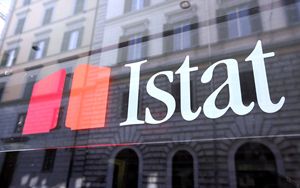(Finance) – In terms of Purchasing Power Standardsamong the EU27 countries average annual gross salary For employee in Italy it was equal to almost 27 thousand euros in 2021, approximately less 3,700 euros to that of the EU27 (-12 per cent) and by over 8 thousand to that of Germany (-23 per cent). It is one of the data that emerged from Annual Report 2023 of theIstat. In 2022, the dynamics of salaries contractual it remained moderate (+1.1 per cent; it was 0.6 per cent the previous year) despite the intense negotiation activity which saw 33 contracts renewed, relating to approximately 4.4 million employees.
In the’industry there was a growth of +1.5 per cent while in the Public administration (PA) the trends are in line with the average ones. Weaker those in the sector of services private (+0.5 percent) reflecting the large share of employees with expired contracts. Most of the renewals signed in 2022 have set increases more in line with the evolution of theinflationbut they represent less than 10 percent of total employees and therefore have a limited impact on total dynamics.
The Report further argues that i young they represent the key resource for planning the future and for the growth of the country. For this reason, the close to 20 percent share of young people between the ages of 15 and 29 who in Italy in 2022 are not studying, not working and are not included in training courses is “particularly worrying”. These are the so-called NEET (English acronym for Not in employment, education or training). There are almost 1.7 million boys and girls. The Italian rate of Neet it is over 7 percentage points higher than the European average (11.7 per cent) and, in the EU27, second only to Romania.
The phenomenon affects to a greater extent the girls (20.5 percent) and, above all, the residents of the regions of Noon (27.9 percent) – especially Sicily -, and the foreigners, who present a rate (28.8 per cent) higher than that of Italians by almost 11 percentage points. This distance doubles in the case of girls foreign, for which the rate is close to 38 per cent. According to the Statistical Institute, “promoting their entry into the training system It is in the job market could help reduce the dissipation of capital human of young people, an increasingly scarce resource in the near future”.
In Italy the high incidence of NEET is associated with a youth unemployment rate high (18 per cent, almost 7 points higher than the European average), with a share of young people looking for work for at least 12 months three times (8.8 per cent) compared to the European average (2.8 per cent). Compare with the average Europeanyoung Italians between the ages of 15 and 29 have a share of labor participation (33.8 per cent) that is more than 15 percentage points lower, and a scarce diffusion of student-workerswho in our country represent 6 percent of young people in this age group, while the European average is 16.7 percent.
Furthermore, almost 38 percent of NEETs (629,000) are neither looking for work nor are they available to work immediately. The latter group is divided in similar proportions among those waiting to embark on a path formative (47.5 percent among boys), who declares reasons for caring for children or other non-self-sufficient family members (46.2 percent among girls) and who points Health problems. Only 3.3 say they have no interest in or need to work.
“In Italy, the intergenerational transmission of poverty is more intense than in most countries of the European Union: almost a third of adults aged between 25 and 49 at risk of poverty, when they were 14, lived in families who were in a bad economic condition”. To point the finger at the “poverty trap” is the president of Istat, Francesco Maria Chelli. “However, the future of the country – she explained – cannot disregard a full valorisation of the energies and potential expressed by our young people, and a reduction of those vulnerabilities that prevent their active participation in economic and social life”.
The Istat report on the situation in Italy highlights “new opportunities for growth and well-being and, at the same time, not negligible elements of crisis and uncertainty“, continues Chelli. “The period we have behind us – he underlined in his report – was certainly not easy. The country has been challenged bysanitary emergency and from economic crisis which followed. Many inequalities at an economic, social and territorial level they have worsened” .
In the last two years, “other crisis fronts have overlapped: the war in Ukraine, international tensions, the energy crisis and the return of inflation. These are factors that have conditioned the recovery of the economy and increased the disorientation of families and the uncertainty for the businesses“, he added. Yet, Italy “has shown a considerable capacity for resilience and reaction. It is in this context that the report takes into account the demographic, social, economic and environmental transformations that have characterized our country in recent years”.
“To deal with the complexity of the present, and to guarantee a more balanced, sustainable and inclusive development, it is necessary, moreover, to know the interconnections which are established among them transformations and which affect the productive fabric And social with different methods and speeds”. In this edition, in particular, “we wanted to put i youngas a resource to be exploited and potential not to be squandered in order to build a future that is coherent with the development objectives that I have just mentioned”, he concluded.
